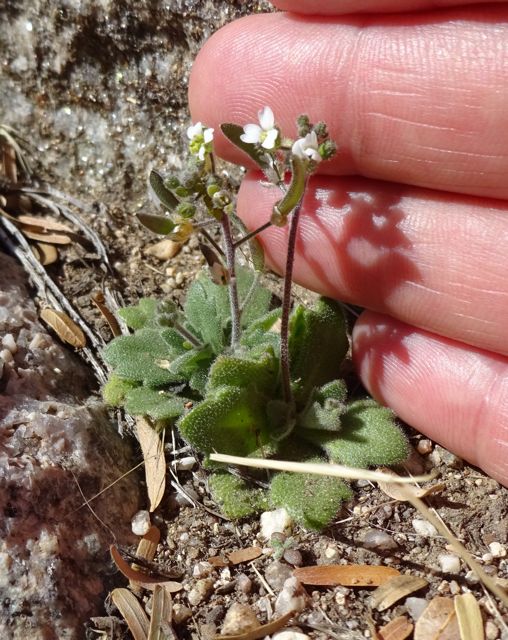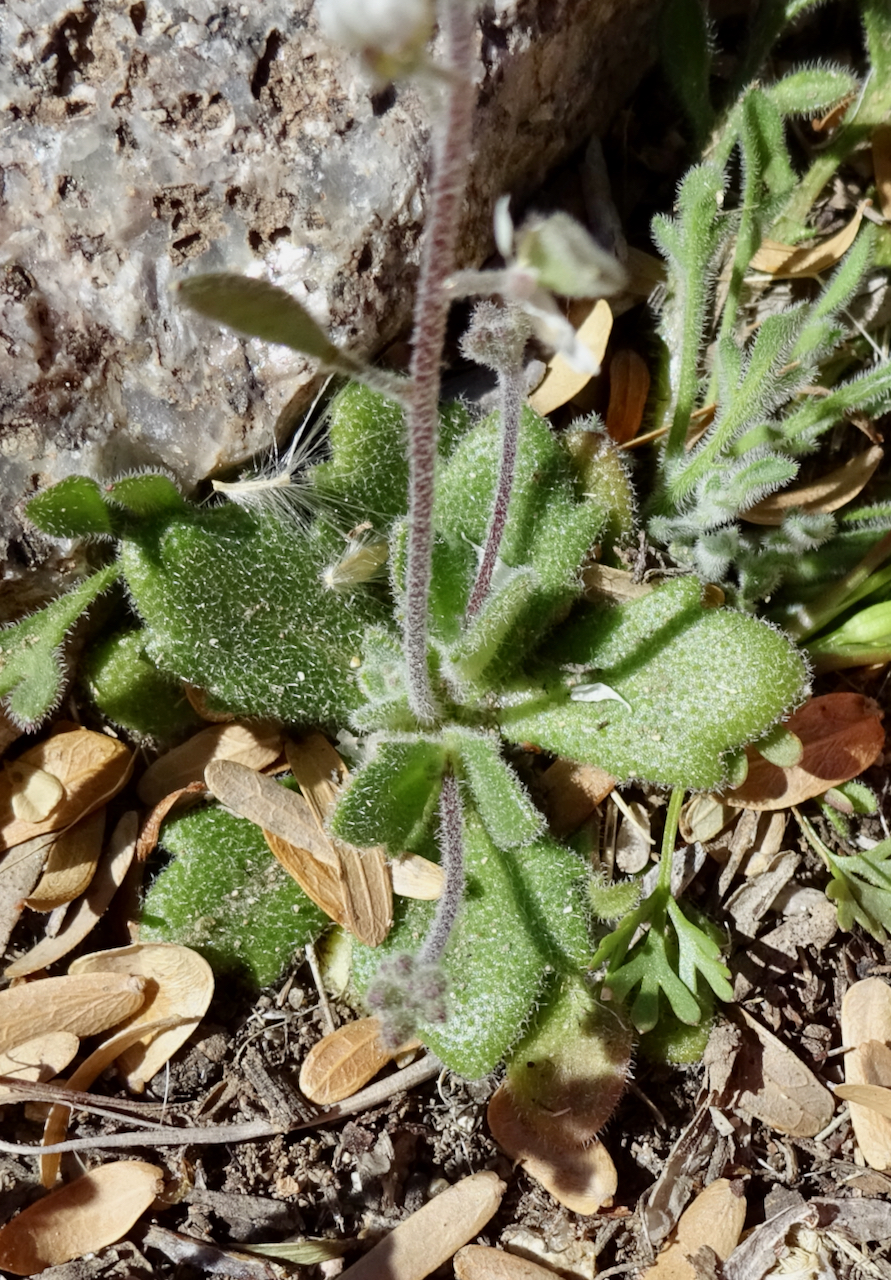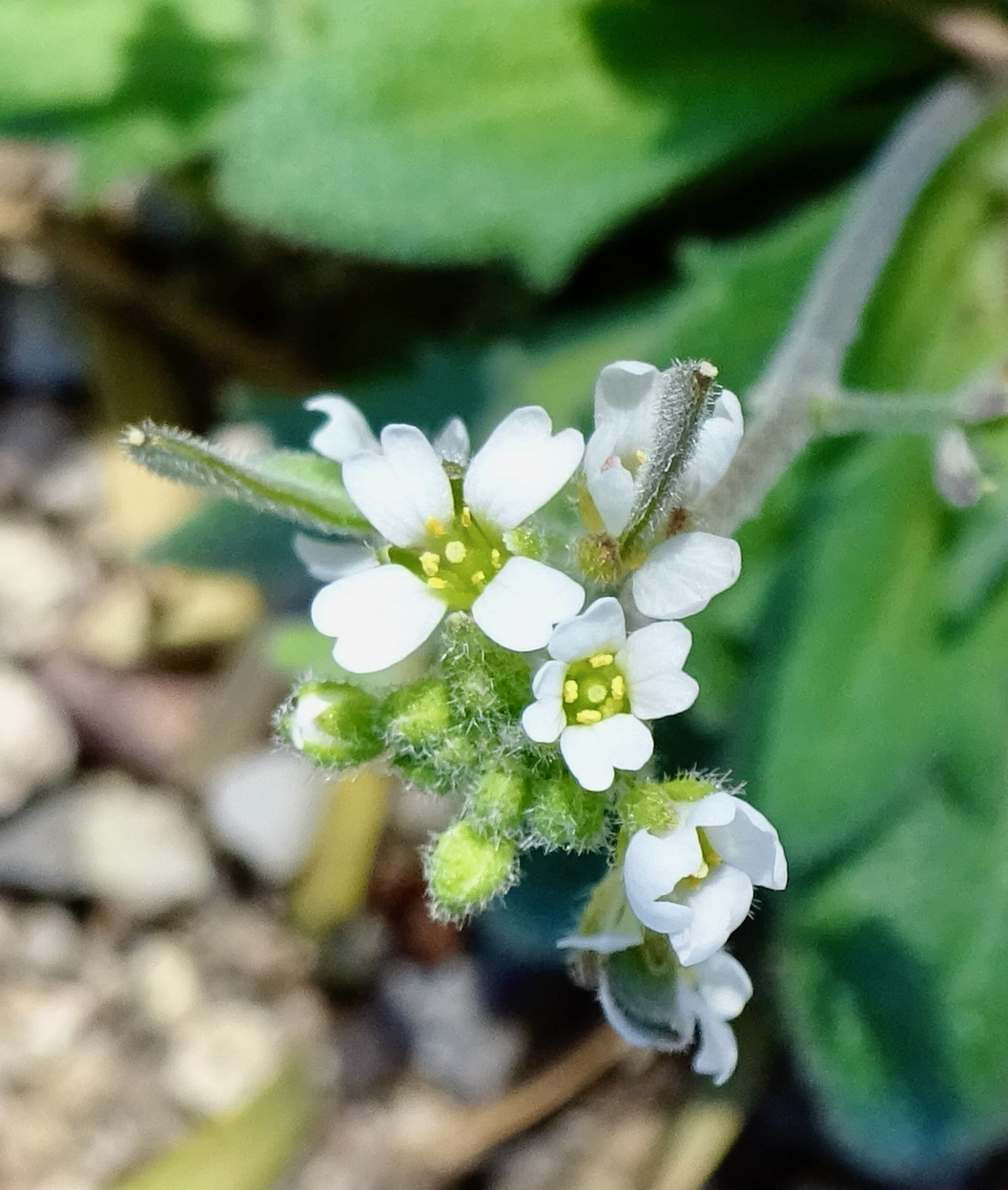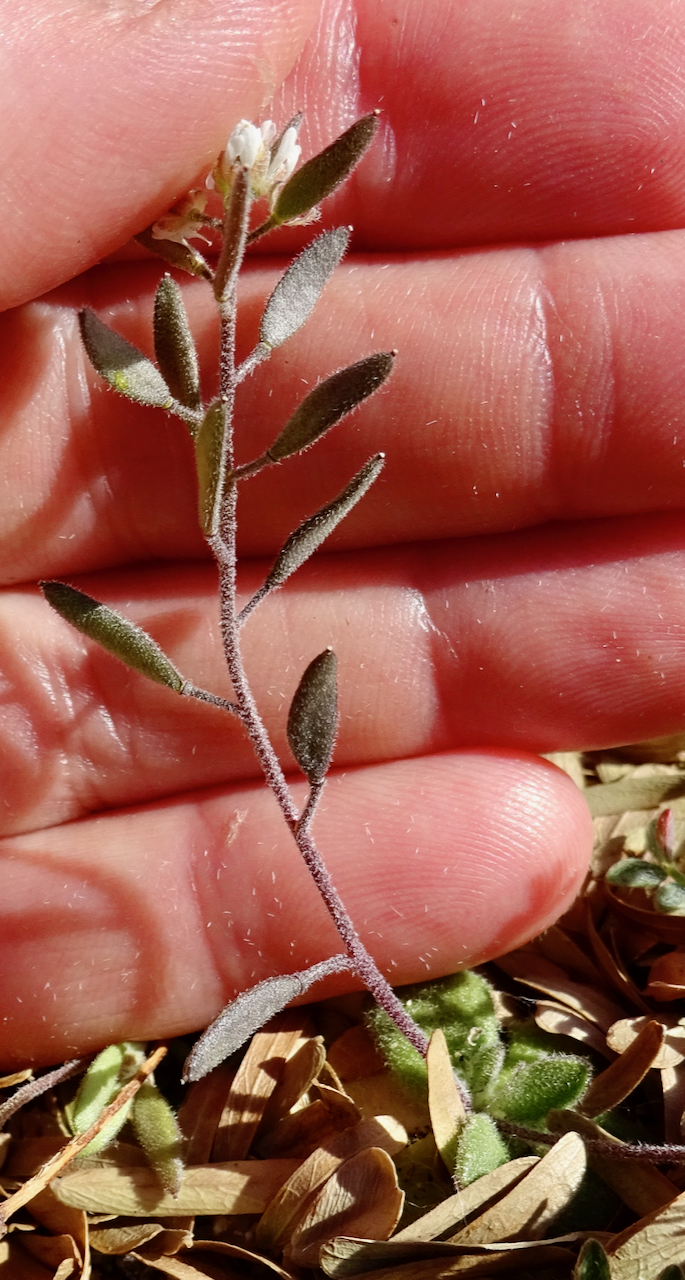Wedgeleaf draba
Tomostima cuneifolia
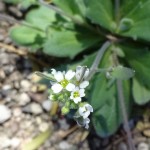
About the Plant
This annual spring wildflower is found in the southern half of the US west of the Mississippi. It can begin flowering at a height of only half an inch, though may eventually reach to 8 inches. Many plants close together can create a white carpet.
Wedgeleaf draba needs no care from you other than to leave it alone until it dies back and the seeds are released.
Notes: The previous scientific name for this plant was Draba cuneifolia.
More Information:
The Weekly Plant on wedgeleaf draba (as Draba cuneifolia)
Information from Southwest Colorado Wildflowers
Map of distribution in US (as Draba cuneifolia) (yellow indicates plant is native but rare)
Technical botanical description from SEINet (as Draba cuneifolia)
ID Characteristics
This plant is in the Brassicaceae - the mustard family.
Wedgeleaf draba can bloom and fruit when it is very small (above plant is 1.5 inches). The leaves are at the base of the plant only. The flower stalks are leafless.
Each leaf is about one-half inch long and covered with hairs. The edge of a leaf may have a notch, on one side or both sides.
Wedgeleaf draba is in the mustard family (Brassicaceae). Its 1/8-inch flower has 4 petals, a characteristic of this family. Each petal is white with a small notch in the end. New flowers are formed on the end of the flower stalk with the fruit developing below. Each plant can put up several hairy flower stalks (see second photo above).
The fruit is flattened, about half an inch long, and covered with hairs (a recurring theme for this plant). It is held out horizontally from the stalk and may be slightly curved.
